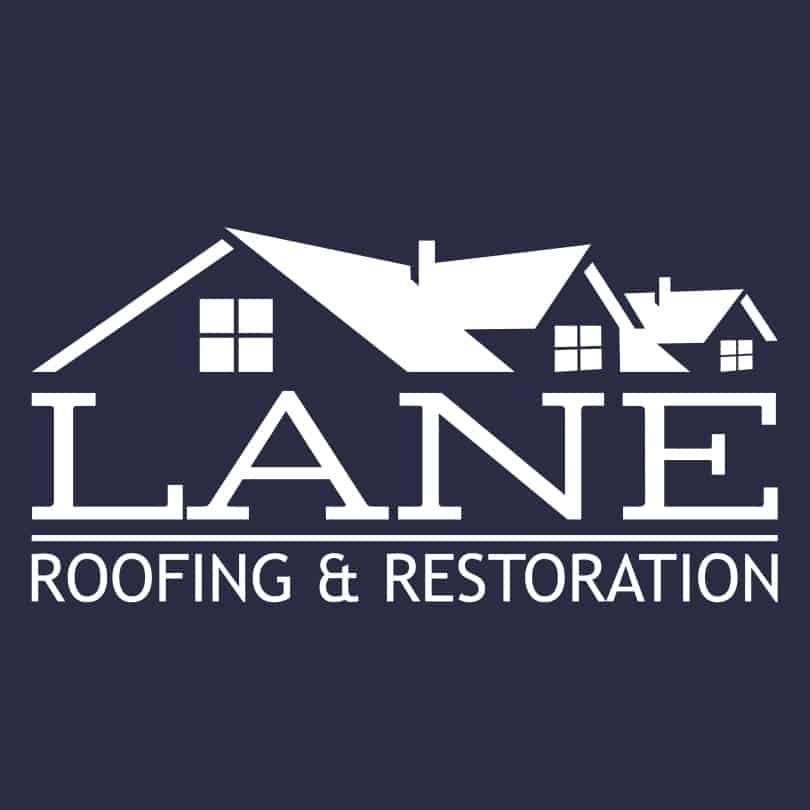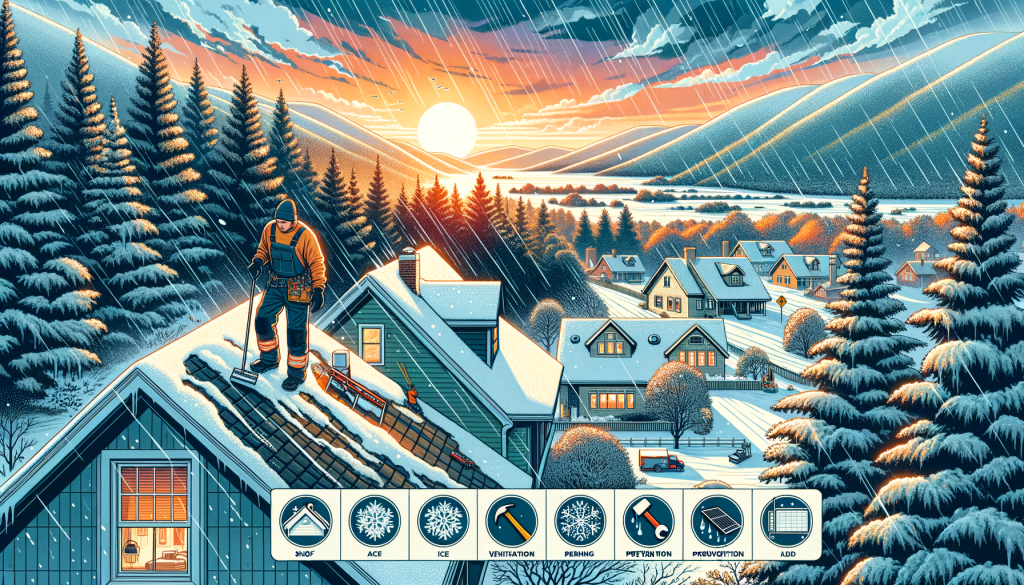Asheville residents know firsthand that winter in Western North Carolina brings a unique set of challenges for homeowners. As the colorful autumn leaves give way to the crisp winter air, your home’s first line of defense—the roof—faces some of its toughest tests of the year. At Lane Roofing and Restoration, we’ve spent years helping our neighbors throughout the Asheville area prepare their homes for winter’s challenges, and we’ve seen how proper preparation can make all the difference.
Walking through our mountain neighborhoods after the first big winter storm tells a clear story: some homes weather the season beautifully, while others show immediate signs of stress. The difference often comes down to preparation and understanding the specific winter roofing concerns unique to our local climate. Our Blue Ridge mountains create weather patterns that don’t follow the rulebook you might find in other parts of the country.
Winter in Asheville means frequent temperature fluctuations, occasional ice storms, heavy winds coming down from the mountains, and moisture that can linger longer than in other regions. Your roof needs specific attention to handle these local challenges. Let’s explore the most common winter roofing concerns for Asheville homeowners and practical solutions to protect your home through the cold months ahead.
Ice Dam Formation: A Hidden Danger for Asheville Homes
While Asheville doesn’t typically see the extreme sustained freezing temperatures of northern states, our frequent freeze-thaw cycles create perfect conditions for ice dam formation. These dangerous accumulations occur when heat from your attic melts snow on your roof, which then refreezes at the colder eave edges.
Ice dams are particularly problematic in our region because many Asheville homes feature architectural details like valleys, dormers, and multiple roof planes that can trap snow and ice. Once formed, these dams prevent proper drainage and force water back under your shingles—a recipe for interior leaks and structural damage.
The key to preventing ice dams lies in proper attic insulation and ventilation. Many older Asheville homes lack sufficient insulation to maintain consistent roof temperatures. By improving your attic’s thermal barrier, you reduce the heat transfer that creates the melt-freeze cycle in the first place. Additionally, proper soffit and ridge ventilation systems help maintain consistent roof temperatures.
For homes in higher elevation areas like North Asheville or Black Mountain, additional protective measures may be necessary. We often recommend heat cables strategically installed along roof edges for properties with a history of severe ice damming.
Wind Damage: Protecting Your Roof from Mountain Gusts
Asheville’s position among the mountains means winter brings particularly strong wind patterns. These high winds can lift and damage shingles, especially those already weakened by age or previous storms. The risk increases substantially for homes situated on ridgelines or in exposed locations.
Wind damage often starts small—perhaps a few lifted shingle edges—but quickly escalates without attention. Those small entry points allow moisture to penetrate, leading to more significant problems as winter progresses.
Pre-winter roof inspections are crucial for identifying vulnerable areas before they fail. We look for loose or damaged shingles, proper fastening, and secure flashing around all roof penetrations. For many Asheville homes, particularly those in wind-exposed locations, upgrading to impact-resistant shingles provides additional protection against our unique mountain weather patterns.
Remember that roof damage from winter winds isn’t always immediately visible from the ground. A professional inspection can identify subtle problems that might otherwise go unnoticed until they cause interior damage.
Snow Load Concerns: Weight Management for Asheville Roofs
While Asheville typically receives moderate snowfall compared to other mountain regions, we occasionally experience significant accumulation—especially at higher elevations. What makes our local snow situation unique is the frequency of heavy, wet snow followed by rain, which substantially increases the weight burden on your roof.
The architectural diversity of Asheville homes creates varying snow load capacities. Steeply pitched roofs common in historic neighborhoods like Montford generally shed snow effectively, while the flatter roof sections found in mid-century homes in areas like Kenilworth may accumulate more weight.
Understanding your roof’s structural design and load capacity is essential for snow management. Most well-maintained roofs can handle our typical snowfall, but homes with complex designs, multiple additions, or aging structures require special attention.
For properties with known load concerns, we recommend establishing a snow removal plan before winter arrives. This includes identifying a qualified professional who can safely remove accumulation when necessary—attempting DIY snow removal often causes more damage than it prevents and creates significant safety hazards.
Condensation and Moisture Issues: The Silent Threat
Asheville’s winter climate often brings days of persistent fog, mist, and light rain—sometimes lasting for weeks. This sustained moisture creates perfect conditions for condensation problems, particularly in poorly ventilated roof systems.
The temperature differential between warm indoor air and cold external surfaces causes condensation to form within attic spaces and under roofing materials. Without proper air circulation, this moisture becomes trapped, leading to mold growth, wood rot, and insulation damage.
Many Asheville homes, especially those built before modern building codes, have insufficient ventilation systems. Addressing this concern involves creating a balanced system of intake vents (typically at soffits) and exhaust vents (at or near the ridge).
During our pre-winter inspections, we evaluate existing ventilation systems and recommend improvements where needed. Solutions might include adding ridge vents, installing additional soffit ventilation, or incorporating mechanical ventilation in challenging roof configurations.
Proper attic insulation works together with ventilation to reduce condensation risks. The goal is to maintain the attic space at a temperature close to the outside air while preventing heat loss from your living areas below.
Flashing and Sealant Failures in Cold Weather
The flashing and sealants protecting vulnerable areas of your roof face special challenges during Asheville winters. Our frequent temperature fluctuations—sometimes swinging 30+ degrees within a day—cause materials to expand and contract repeatedly.
These thermal cycles are particularly hard on the sealants around chimneys, vents, skylights, and other roof penetrations. Materials that have already begun to deteriorate often fail completely during winter’s first cold snap.
Aging or improperly installed flashing around chimneys presents a significant risk, especially in older Asheville neighborhoods with original masonry chimneys. The junction between masonry and roofing requires specialized flashing techniques to remain watertight through seasonal changes.
Pre-winter maintenance should include inspection and repair of all flashing and sealed areas. In many cases, proactively replacing aging sealants before they fail prevents emergency repairs during the most challenging weather conditions.
For homes with multiple previous repairs, comprehensive flashing replacement often provides more reliable protection than continued spot repairs. This investment typically pays for itself by preventing water damage to interior structures.
Gutter System Maintenance: Critical for Winter Performance
Asheville’s abundant trees—from majestic oaks to towering pines—create significant debris that fills gutters each fall. When winter arrives, clogged gutters quickly become part of a larger roofing problem.
Proper water drainage is essential during freeze-thaw cycles. Blocked gutters cause water to back up onto the roof edge, creating perfect conditions for ice dam formation and fascia damage. Additionally, overflowing gutters can direct water toward your foundation, causing basement moisture problems.
Complete gutter cleaning before winter’s arrival is essential maintenance for Asheville homes. Beyond removing leaves and debris, inspection should include checking for proper slope, secure fastening, and connection to downspouts.
For homes in heavily wooded areas like Beaverdam or Chunns Cove, gutter guard systems can help maintain flow throughout winter while reducing maintenance needs. However, not all gutter protection systems perform equally in our mountain environment—some designs may actually trap pine needles or small debris.
Emergency Response Planning: Being Prepared for Winter Storms
Even with thorough prevention, Asheville’s winter weather occasionally creates roofing emergencies. Ice storms, high winds, or falling limbs can damage even well-maintained roofs. Having an emergency response plan is an essential part of winter preparation.
Know whom to call if you discover a leak or damage during winter weather. Reputable local contractors (like Lane Roofing) maintain emergency response capabilities throughout winter. Keep contact information readily available, and understand what constitutes a true emergency versus a situation that can wait for better weather conditions.
Document your roof’s condition before winter with photos, particularly if you have existing concerns. This documentation helps with insurance claims if storm damage occurs and provides valuable reference points for evaluating changes throughout the season.
For homes with known vulnerabilities, consider having emergency supplies on hand—tarps, plastic sheeting, or even a supply of roof cement for temporary repairs. While these measures aren’t substitutes for professional repairs, they can minimize damage until proper work can be completed.
Professional Inspection: Your Best Prevention Strategy
The most effective way to avoid winter roofing problems is a comprehensive professional inspection before cold weather arrives. In Asheville’s climate, scheduling this inspection in early fall provides adequate time to address any concerns before winter weather sets in.
A thorough inspection covers not just the roof surface but all components of your roofing system: structural elements, attic space, ventilation, flashing, gutters, and insulation. This holistic approach identifies potential problems that might not be visible from a simple visual check.
Beyond identifying immediate concerns, professional inspections provide valuable information about your roof’s overall condition and remaining lifespan. This insight helps you plan for eventual replacement and make informed decisions about repair investments.
For Asheville homeowners, working with local contractors familiar with our specific regional challenges provides additional benefits. Local experience matters when evaluating how your particular roof orientation, elevation, and surrounding landscape affect winter performance.
Taking Action: Your Winter Roof Protection Plan
As we approach another Western North Carolina winter, creating a specific roof protection plan for your home offers the best defense against cold weather problems. This personalized approach considers your home’s unique characteristics, location, and roofing history.
Start by scheduling a professional inspection to establish your roof’s current condition. Address any identified maintenance needs before temperatures drop, particularly repairs involving sealants or adhesives that require warmer installation conditions.
Ensure your attic insulation and ventilation systems are performing properly. These elements work together as your primary defense against ice dams and condensation issues throughout winter.
Complete gutter cleaning after the majority of leaves have fallen but before freezing temperatures arrive. Consider upgrading your gutter system if recurring winter problems suggest existing components aren’t adequate for your home’s needs.
Finally, establish communication with your roofing contractor about winter monitoring and emergency response. Understanding what to watch for and when to call helps prevent minor issues from becoming major problems.
Here in Asheville, we’ve learned that preparing for winter isn’t just about preventing problems—it’s about protecting the comfort, safety, and value of our homes through the challenging season ahead. Your roof deserves this attention as your home’s first line of defense against our unique mountain winter conditions.
Remember, while DIY maintenance has its place, professional guidance ensures nothing is overlooked in preparing your roof for winter’s challenges. At Lane Roofing and Restoration, we’re committed to helping our neighbors throughout Western North Carolina protect their homes with local expertise and reliable service—before, during, and after winter’s arrival.

